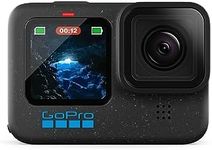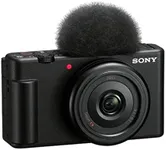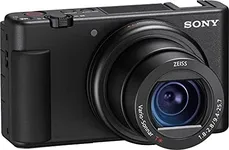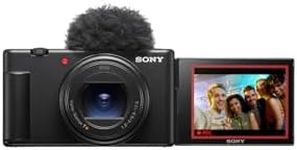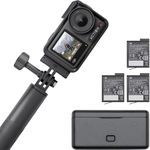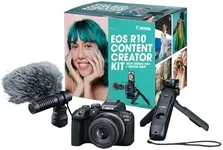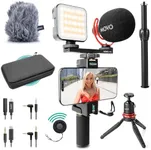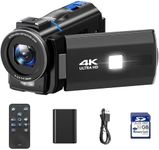Buying Guide for the Best Camera For Vlogging Set
Choosing the right camera for vlogging can significantly impact the quality of your content and your overall experience as a vlogger. When selecting a camera, it's important to consider various specifications that will affect the video quality, ease of use, and versatility of the camera. Understanding these key specs will help you make an informed decision and find the best fit for your vlogging needs.ResolutionResolution refers to the number of pixels that make up the video image. Higher resolution means more detail and clarity. Common resolutions include 1080p (Full HD) and 4K (Ultra HD). If you want high-quality, crisp videos, especially for professional vlogging, 4K is a great choice. However, 1080p is still widely used and sufficient for many vloggers, especially if you're just starting out or if your content is primarily viewed on mobile devices.
Frame RateFrame rate is the number of frames captured per second (fps). Common frame rates are 24fps, 30fps, and 60fps. A higher frame rate results in smoother motion, which is particularly important for action shots or fast-moving subjects. For most vlogging purposes, 30fps is standard and provides a good balance of smoothness and file size. If you plan to do a lot of slow-motion videos, consider a camera that can shoot at 60fps or higher.
AutofocusAutofocus is the camera's ability to automatically focus on the subject. This is crucial for vlogging, as it ensures that you remain in focus even when moving around. Look for cameras with fast and reliable autofocus systems, such as those with face and eye detection. This feature is especially important if you plan to vlog solo and need the camera to adjust focus without manual intervention.
StabilizationStabilization helps reduce camera shake and produce smoother videos, which is essential for handheld shooting. There are two types: optical image stabilization (OIS) and electronic image stabilization (EIS). OIS is generally more effective as it physically adjusts the lens to counteract movement. If you plan to vlog while walking or moving, a camera with good stabilization will make a big difference in the quality of your footage.
Audio QualityGood audio quality is just as important as video quality for vlogging. Built-in microphones on cameras can vary in quality, so look for cameras with high-quality built-in mics or the ability to connect an external microphone. External microphones often provide better sound quality and reduce background noise. If you plan to vlog in noisy environments or want professional-grade audio, ensure the camera has a microphone input.
PortabilityPortability refers to the size and weight of the camera. A more portable camera is easier to carry around and use in various locations. If you plan to vlog on the go, travel frequently, or need to hold the camera for extended periods, a compact and lightweight camera will be more convenient. However, if you prioritize features and performance over portability, you might opt for a slightly larger camera with more advanced capabilities.
Battery LifeBattery life determines how long you can use the camera before needing to recharge or replace the battery. Longer battery life is beneficial for extended shooting sessions and when you're away from power sources. Check the estimated battery life provided by the manufacturer and consider your typical vlogging sessions. If you plan to vlog for long periods, look for cameras with longer battery life or the option to use external battery packs.
ConnectivityConnectivity options, such as Wi-Fi, Bluetooth, and USB, allow you to transfer videos to other devices, control the camera remotely, and live stream. Wi-Fi and Bluetooth are useful for quickly sharing content to your smartphone or computer. If you plan to live stream or need to transfer files frequently, ensure the camera has reliable and fast connectivity options. This can streamline your workflow and make it easier to manage your content.
